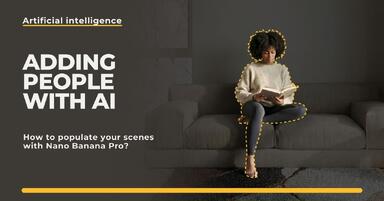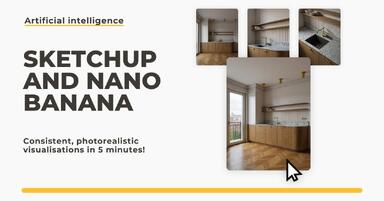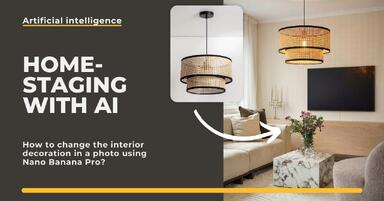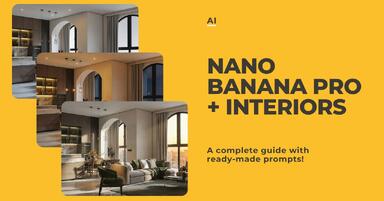Publication date: 17-04-2025 | Update date: 17-04-2025 | Author: Piotr Kurpiewski
Chat GPT in interior design - revolution in visualization creation!
Chat GPT featuring GPT-4o introduces a revolution in interior design, allowing for the creation of photorealistic visualizations based on a sketch, screenshot, or photo. By combining text and image analysis, it enables rapid style changes, manipulation of lighting, and testing various arrangement options without the need for rendering. GPT-4o excels at the conceptual stage, seeking inspiration, and in post-production. For more precise applications, such as replicating dimensions or materials, tools like Stable Diffusion, Flux, or traditional V-Ray are still superior. Nonetheless, GPT-4o's capabilities are already sufficient for many interior designers and enthusiasts today.
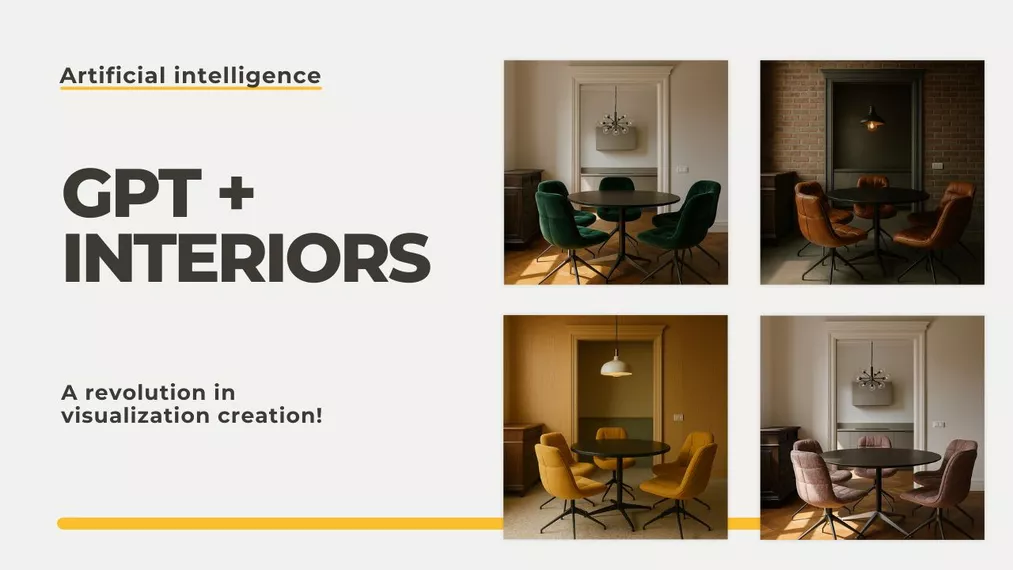
Jus recently, creating realistic interior visualizations required hours of work in SketchUp, 3ds Max, or Blender, followed by painstaking rendering with V-Ray or Corona. Today, all it takes is a sketch, a screenshot, or a photo to obtain a spectacular effect within a few seconds. All thanks to the latest version of Chat GPT - GPT-4o, which not only "understands" text but also has the ability to process and edit images in real time.
In this article, we will show you how this technology works, what possibilities it offers, and where it can be useful in the work of an interior designer - from the initial idea to post-production.
GPT-4o - how does it work and what can it do?
GPT-4o is the latest artificial intelligence model created by OpenAI. Its biggest breakthrough is its ability to work with both text and images in a single, seamless interface. You can upload an interior sketch and write a simple prompt like:
"Transform this interior into a loft-style with lots of brick and black accents, while maintaining the layout of the furniture."
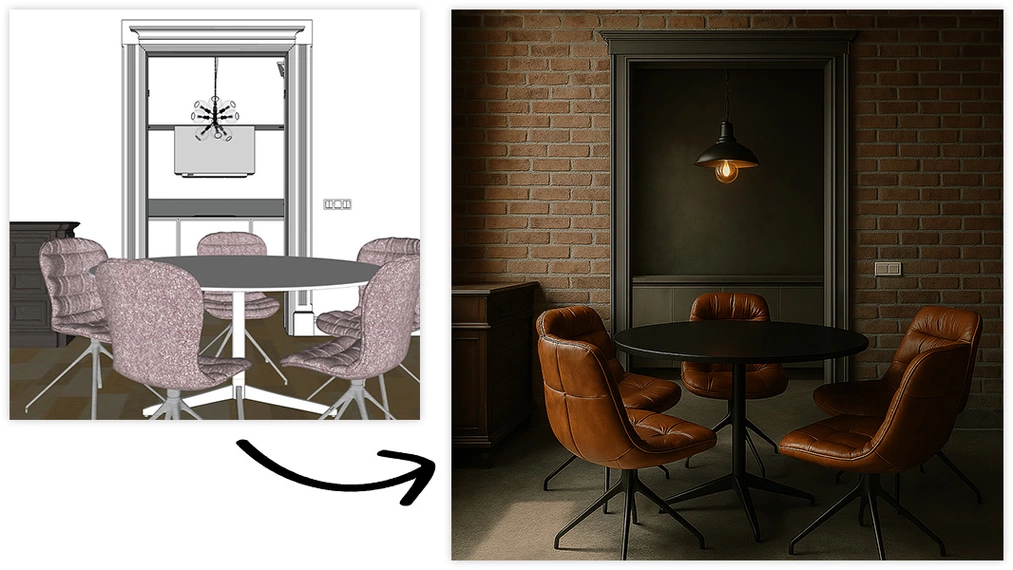
After a few seconds, you receive a new version of the image - tailored to the instructions. GPT not only understands the general style, but can also interpret it visually, which until recently was reserved for 3D graphic designers and post-production specialists.
How to turn a sketch into a visualization?
For interior designers, the most interesting feature of GPT-4o is the ability to quickly translate a concept into an image. A screenshot from a 3D model, even without textures, is enough to receive a preliminary but impressive visualization.
Furthermore, GPT-4o can interpret materials, geometry, and space, even if they are only indicated by color or simple form. This is a great tool at the conceptual stage of work, where a quick visual effect counts, even without full precision.
How to change the interior style with one click?
One of the most spectacular uses of GPT-4o in interior architecture is the quick change of the style of an existing arrangement. Without the need to reconstruct the model or re-render, you can transform the interior from classic to industrial, japandi, modern farmhouse, glamour, or any other style.
This is an excellent solution:
- for designers who want to quickly show clients different options,
- for individuals seeking inspiration for furnishing their own apartment,
- for marketers who want to tailor communication to different target groups.
How to change the light and atmosphere with AI?
GPT-4o also allows for changing the time of day, season, or scene atmosphere. Do you want to see the interior at sunset? Or perhaps you're interested in a version with soft, wintry light or a moody evening illumination?
Without the need to tinker with HDRI maps or light parameters in the rendering engine - you simply enter a prompt, e.g.: "Transform this interior into an evening version with candles and soft lamp light." And it's done.
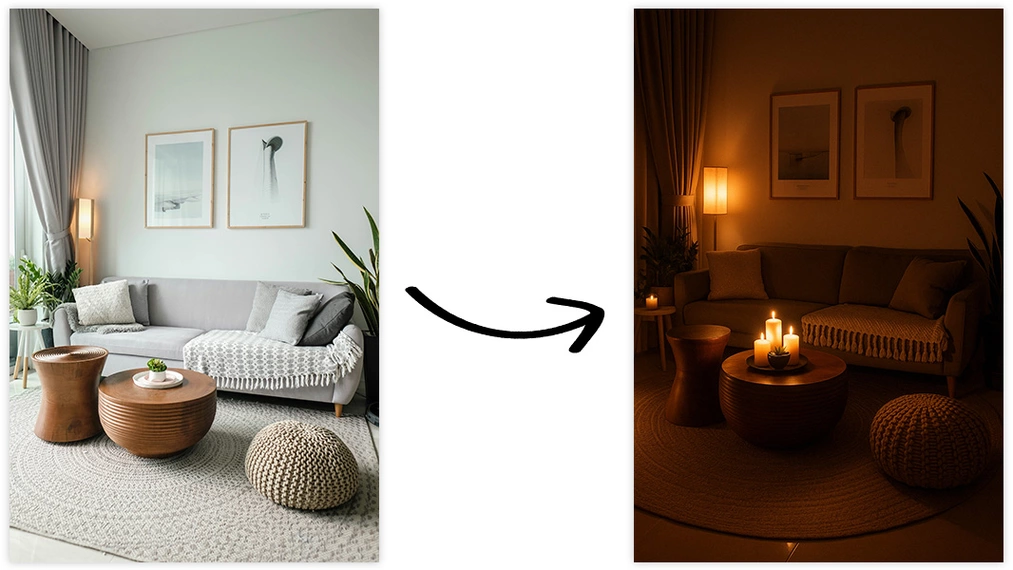
Where GPT-4o is worth using, and where it still doesn't deliver?
Although GPT-4o's capabilities are extremely impressive, it's important to take a sober look at what this technology can actually do. In some applications, it is almost irreplaceable, but there are also areas where it still lags behind traditional design solutions.
GPT-4o is best suited for:
- At the concept stage, where you need a quick preview of an idea,
- Testing different styles and variations,
- Creating atmospheric versions of the same interior,
- In post-production: adjusting lighting, adding elements,
- As inspiration for graphic designers and designers.
Where GPT-4o falls short?
Despite all its advantages, GPT-4o cannot replace tools that provide full control over a project. When you need an accurate reproduction of materials, realistic lighting, maintenance of dimensions, or precise placement of elements - it's better to opt for models like Stable Diffusion (e.g. from ComfyUI) or Flux, which offer much greater possibilities for intervention in the final effect. In the most demanding projects, such as commercial or investment visualizations, classic 3D modeling and rendering in V-Ray or Corona Renderer will still be indispensable.
Summary
GPT-4o is excellent as a complement to the traditional workflow: for quickly creating concepts, styling, preliminary variations, or post-production. It is also increasingly venturing into areas previously reserved for 3D graphics, and all indications are that this trend will continue. Already now, its capabilities are more than enough for many designers and hobbyists.
Przeczytaj o programie AI - Artificial Intelligence na naszym blogu
-
![People in visualizations: how to add realistic characters in Nano Banana Pro?]()
People in visualizations: how to add realistic characters in Nano Banana Pro?
Are your visualizations feeling empty? Learn how to add realistic people in Nano Banana Pro and create videos with Google Veo. Check out our guide! -
![SketchUp and Nano Banana Pro: photorealistic visualizations in 5 minutes! Is this the end of V-Ray?]()
SketchUp and Nano Banana Pro: photorealistic visualizations in 5 minutes! Is this the end of V-Ray?
No more hours-long rendering? Find out how to turn a simple 3D model into a ready-made visualization thanks to AI. See the step-by-step workflow! -
![Homestaging with AI: how to change the interior design in an existing photo with Nano Banana Pro?]()
Homestaging with AI: how to change the interior design in an existing photo with Nano Banana Pro?
Client wants a different sofa in the rendered image? Don't re-render from scratch! See how to do virtual homestaging with AI in 5 minutes. -
![Nano Banana Pro in interior design - a complete guide with ready-made prompts!]()
Nano Banana Pro in interior design - a complete guide with ready-made prompts!
Is it the end of the V-Ray era? Discover Nano Banana Pro and see how to create visualizations, furnish floor plans, and edit projects in minutes!
